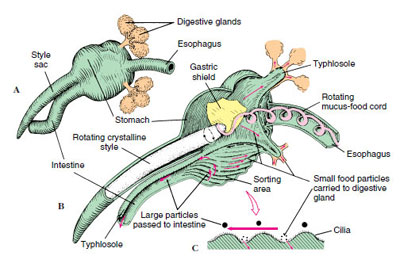
Barnacles
Barnacle Anatomy
Acorn Barnacle Semibalanus balanoides – The Shell
 The shell (carapace) is a ring of (six) plates that surround the soft body.
The shell (carapace) is a ring of (six) plates that surround the soft body.
These consist of:
the rostrum (anterior)
four lateral plates
– two rostrolaterals
– two carinolaterals)
the carina (posterior).
The apex of the ring of plates (the aperture) is covered by an operculum for protection and water retention. The operculum has two halves and opens like a sliding door.
The operculum has two halves and opens like a sliding door.
Each half has a scula and a targa.
When open, the halves are recessed into the carapace.
The plates are held together by various means, depending on species, in some cases being solidly fused.
 The carapace persists in the adult barnacle as an inner (sub) mantle which is covered externally by calcareous plates (shell wall).
The carapace persists in the adult barnacle as an inner (sub) mantle which is covered externally by calcareous plates (shell wall).
Inside the carapace, the animal lies on its stomach, with its limbs (cirri) projecting upwards.
Segmentation is usually indistinct.
The body is more or less evenly divided between the head and thorax with little, if any, abdomen.
Adult barnacles have few appendages on their heads with only a single pair of antennae attached to the cement gland.
The six pairs of thoracic limbs are referred to as “cirri“, which are feathery and very long, being used to filter food, such as plankton, from the water and move it towards the mouth.
Reproduction
Acorn barnacles are hermaphroditic, meaning they have both female and male sex organs.
They do not self fertilize and must mate with other individuals to successfully reproduce.
Like most crustaceans acorn barnacles reproduces via internal fertilization.
For a species that includes individuals that cannot move, that can be a difficult process. Fortunately, individuals of this species have extremely long penises
In the spring when the bay water temperature rises above 50°F, clams come out of “hibernation” and begin to feed on available phytoplankton.
In late spring into early summer when the water temperature rises above 68°F the adults begin to spawn.
Phenotyhic plasticity
Credits
Barnacle plates – Marine Education Society of Australia – Keith Davey
Barnacle external diagram – Dave Cowles 2008

